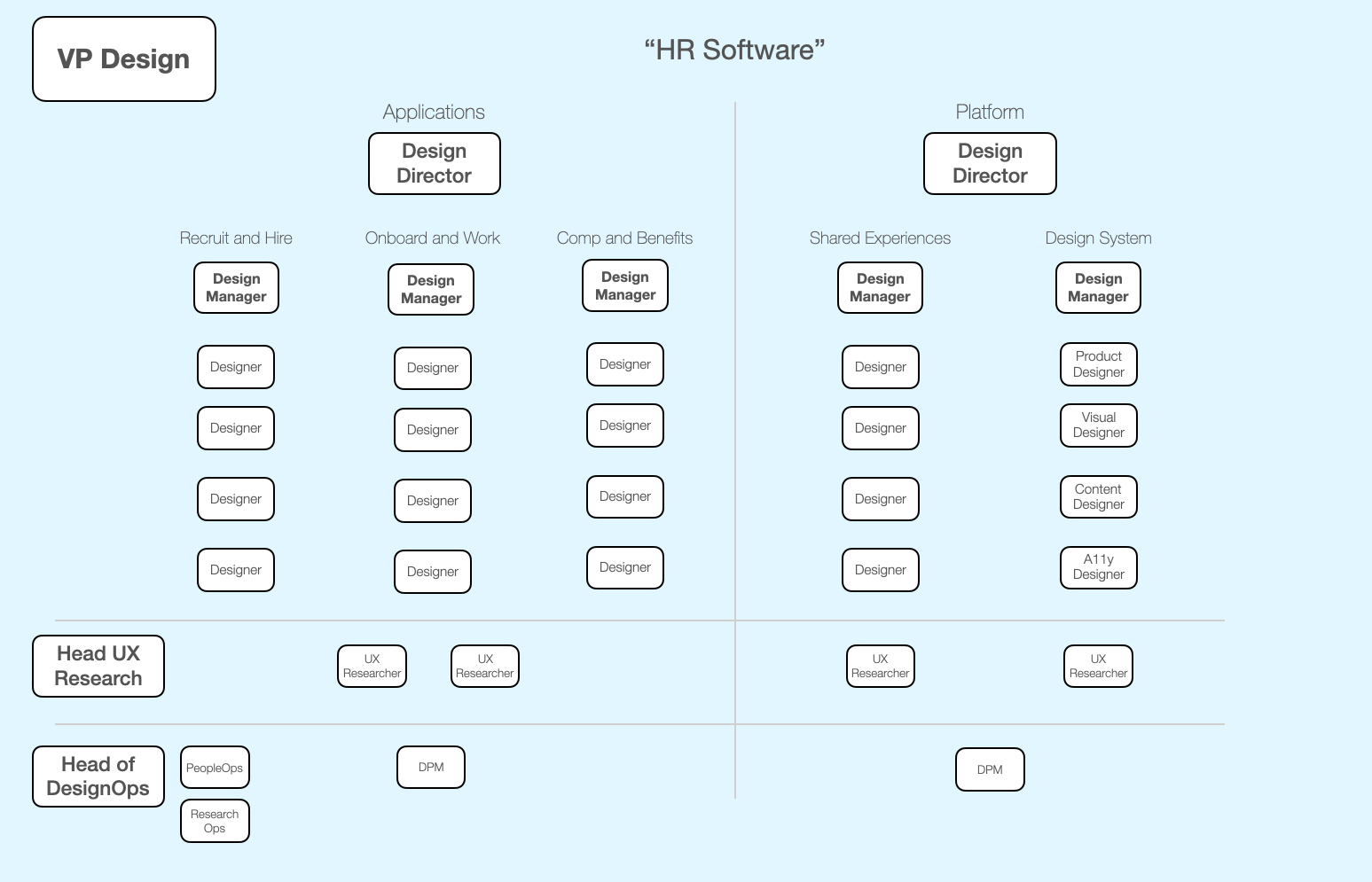3: Creative and Strategic Leadership in Design Orgs—Super-Senior ICs and the Shadow Strategy Team
Originally written 23 Aug 2021; lightly revised 9 June 2025.
As design organizations scale, I've worked with a number of design leaders who struggle with all that's expected of them. Let's look at the "HR Software" org I drew in the last post.

No Time for Creative Leadership
The VP Design is a true design executive, and, as I wrote in The Makeup of a Design Executive, is expected to deliver on Executive, Creative, Managerial, and Operational leadership. The thing is, with a team this size, and particularly if it's growing (as so many teams are), they simply don't have the time to do it all (unless they work 60-, 70-, 80-hour weeks). And these VPs need to focus on what's core to their role, which are the executive and managerial aspects, and so the creative leadership suffers.
Even the Design Director is spread thin—overseeing a team of 15-20 people, recruiting and hiring, encouraging professional development, building relationships with cross-functional peers. This takes up all your time, and, apart from weekly critique sessions, they don't have capacity to provide creative and strategic leadership to their teams.